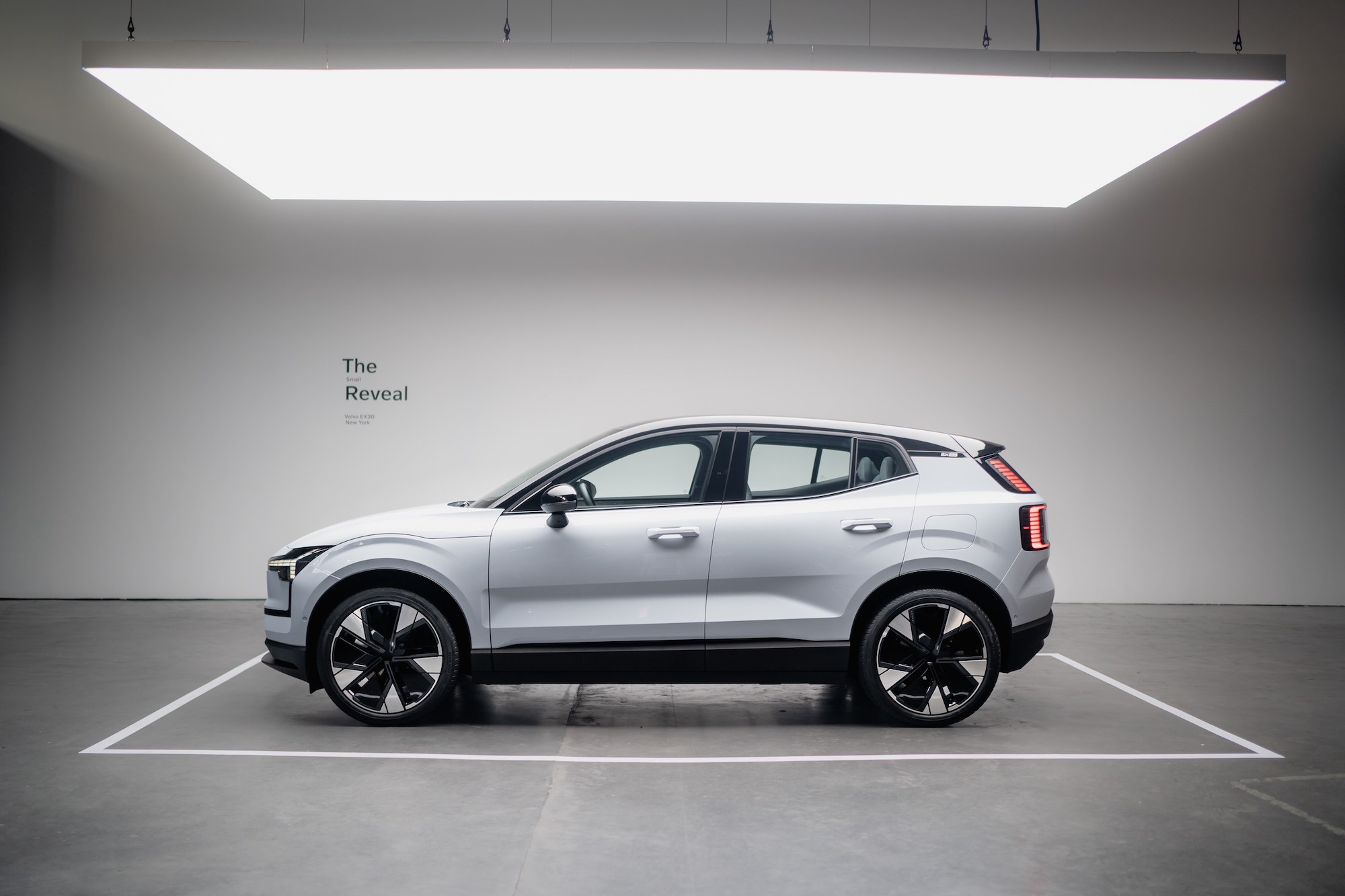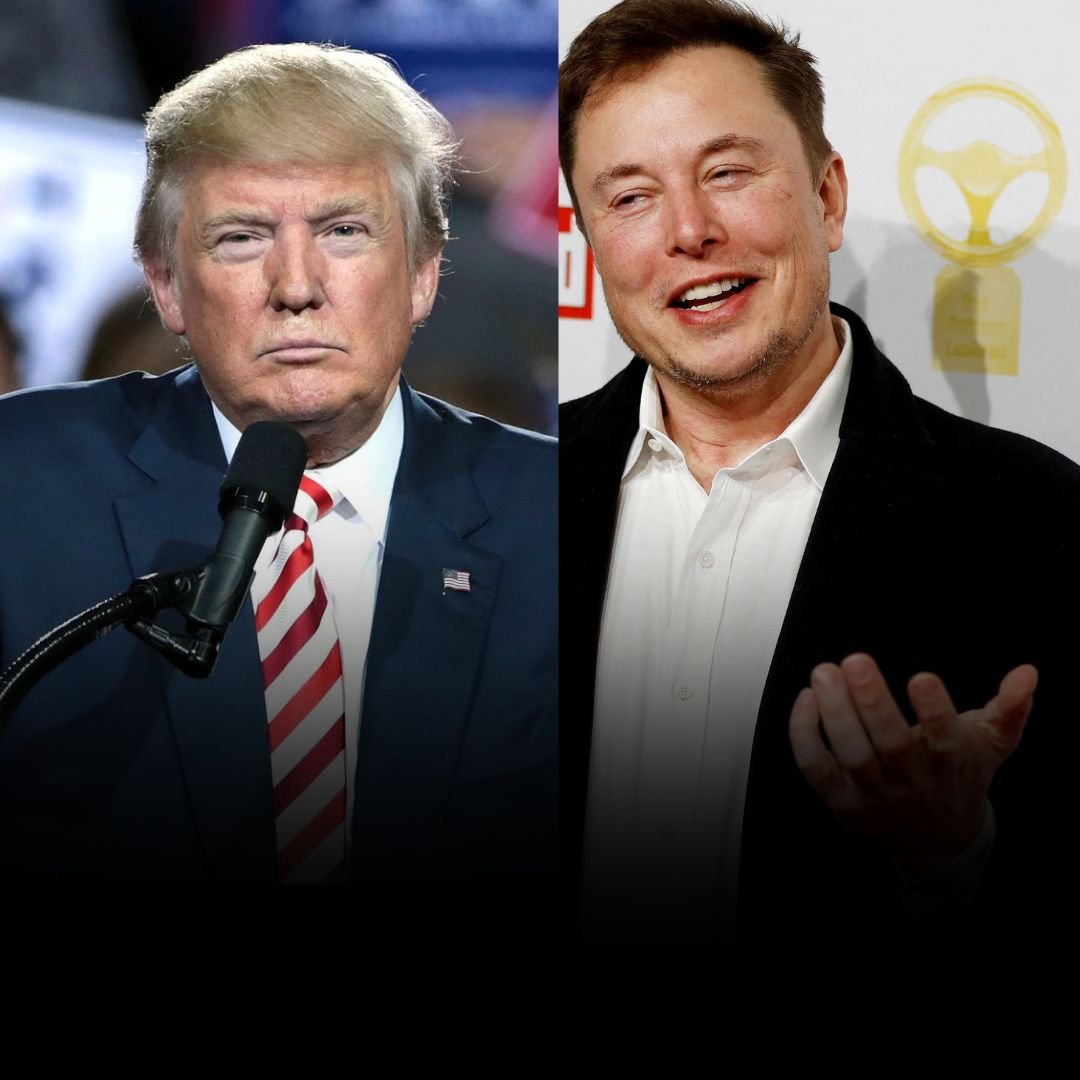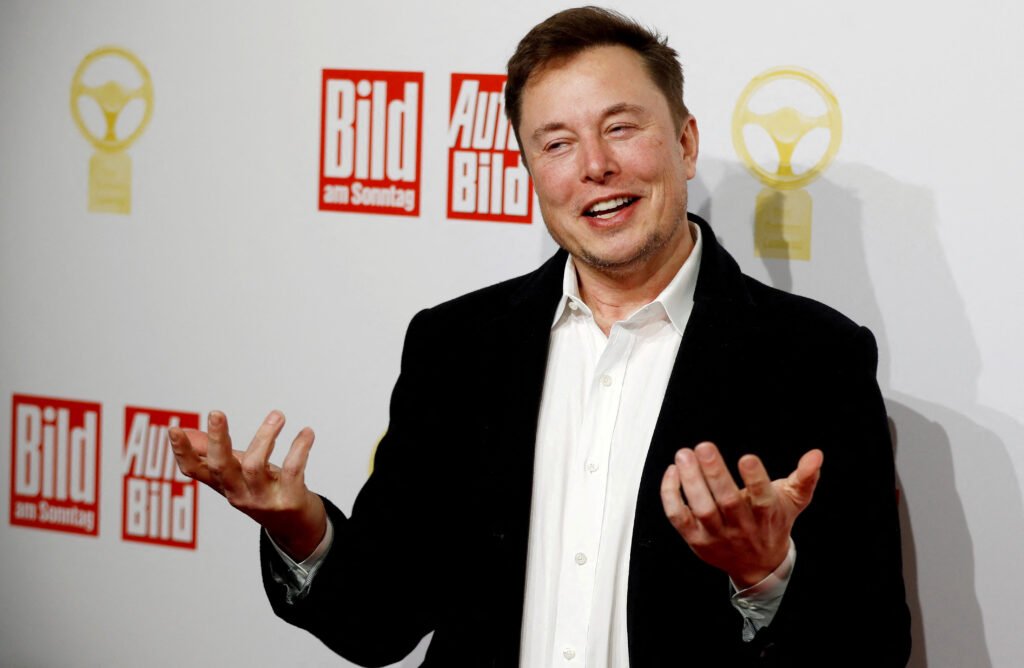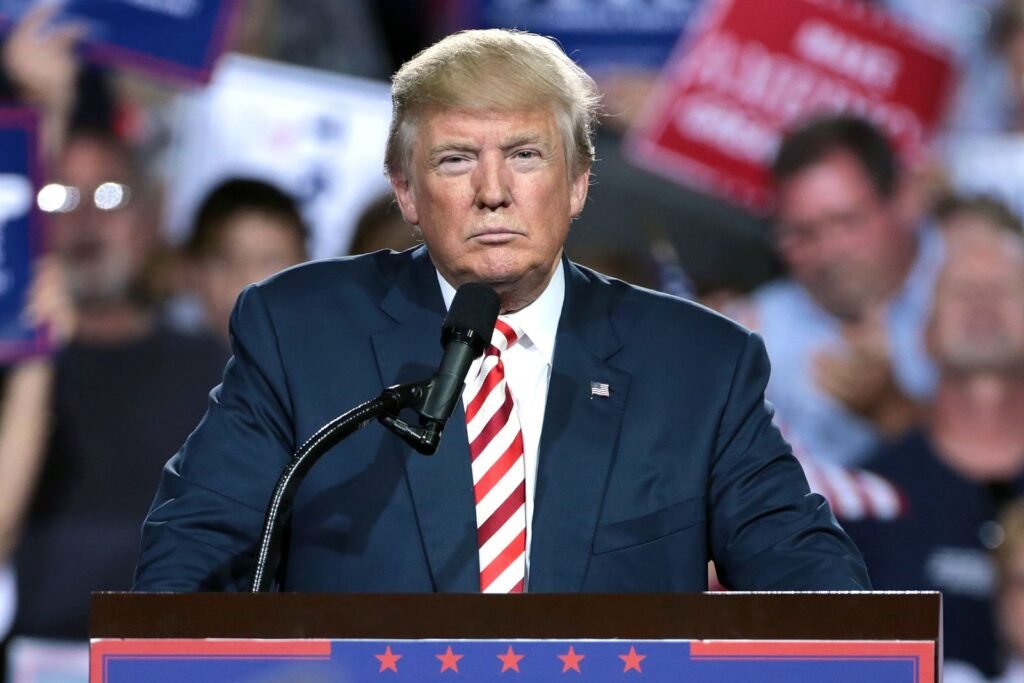World News
Why the all-electric Volvo EX30 is such a big deal on August 1, 2023 at 8:37 pm

Almost a decade ago, Volvo drove into the modern era by going big. Literally. The second-generation XC90 crossover that launched in 2015 helped reset a brand associated with boxy station wagons by offering innovative hybrid engines, striking styling and a big tablet center screen that felt right out of the Tesla playbook.
Now, the car that’s poised to be Volvo’s next big hit is actually pretty small — and affordable, too.
The EX30, which recently made its North American debut in New York, is a car full of firsts. Volvo’s first compact fully electric crossover is its quickest car ever and is outfitted with an innovative, yet cheaper interior made with sustainable materials — a combination the automaker believes is key to turning the EX30 into a mass-volume, mainstream success.
In short, this small car is a big deal for Volvo and a major evolution of the brand. And it’s already making a huge splash.
“The overall reception has been exceeding expectations, multiple times,” David Mele, the EX30’s product manager in the United States, said in an interview. “It’s been remarkably positive. We’re seeing that basically, every market that Volvo operates in is really excited about this car.”
Little car, big deal
A major reason is the EX30’s price tag: It starts at $34,950, instantly making it one of the more affordable EV options in the United States. In a year when electric adoption has seen some ups and downs — some critics worry demand is slowing as EVs pile up on dealer lots — the EX30 will come in well below the average $53,000 price tag these cars command lately.
Very few players exist in America’s affordable EV space right now: There’s the Tesla Model 3 and Model Y, selling like crazy after price cuts and tax rebates; the Chevrolet Bolt, which General Motors reversed course on discontinuing; and a handful of others, like the Kia Niro EV and Hyundai Kona EV and Hyundai Kona Electric. The latter two can easily cross into the $40,000 range at dealer lots.
It’s not that most people aren’t interested in EVs, analysts say, but that they’re turned off by their prices at a time when interest rates are high and the economy faces uncertainty ahead. Data firm AutoPacific found in a recent survey that a price tag below $35,000 is what it would take for many people to flip the switch.
The EX30’s right in that sweet spot, undercutting even Volvo’s next-cheapest car, the compact gas or electric XC40, by a few thousand dollars. The EX30 is about 10 inches smaller than the XC40 and 20 inches smaller than Tesla’s world-beating Model Y crossover.
Previous attempts at compact cars haven’t always gone great for Volvo. Today, its top-selling models in the U.S. are the midsize XC60, followed by the bigger XC90. Past entrants like the compact C30 hatchback and V50 never made a big sales splash, either.
In a lot of ways, the EX30 is risky, but Volvo is banking on that electric powertrain to attract customers it wouldn’t have had before.
Mele said the target EX30 customer is “pre-family” buyers without kids or even “post-family” parents and grandparents. It could be a lot of buyers’ second or third car, or their first EV, and their first Volvo. That’s… a lot of people.
In short, Volvo’s going for mass appeal on this one — something it hasn’t really gone in for terribly often before. “It’s not going to be a niche product,” Mele said. (He declined to discuss sales targets for the EX30.)
Swedish roots, Chinese production
Scale fits with Volvo’s goals of going “half-electric” by 2025 and all-electric by 2030, Mele said. But it’s also a key part of initiatives driven by Volvo’s Chinese parent company, Geely Holding Group. Between Volvo, the more performance-focused Polestar, the British sports car maker Lotus and several EV-focused brands not sold in America like Lynk & Co, Geely is increasingly rising as the Chinese auto conglomerate looking to take over the world — perhaps even without its customers realizing it.
In fact, like just a handful of other cars sold in the U.S. these days, the EX30 will be made in China. That means it won’t be eligible for any U.S. tax credits and that it’s subject to a 27.5% tariff on Chinese-made vehicles — making that price tag even more impressive. (“Anything we have to pay to the government is accounted for in that price,” Mele said, declining to speak on the potential profitability of the car.)
Mele said Volvo is still evaluating where the car will be built over the long term.
While Volvo won’t say anything further officially, it’s plausible that the company could decide to follow the moves of several competitors and put production somewhere in North America. Volvo is already expanding its South Carolina plant to build its flagship EX90 electric crossover. “Our goal, long term, is to build cars where we sell,” Mele said. “That’s both just good from a manufacturing perspective but also cuts down on carbon emissions.”
Other markets aren’t as aggressive on China tariffs, of course. But at a time when European automakers are deeply concerned about lower-cost Chinese cars eating their market share on their home turfs, Volvo is one European brand that could have its kladdkaka and eat it too.
Specs that matter
While Americans have historically been wary of Chinese-made, cars given past perceptions and political tensions, the EX30 could be enough of a deal that it will test just how much we care; the long-held Swedish brand identity might help.
The EX30 offers two battery packs: a 69 kWh nickel-cobalt-manganese unit for North America, and a cheaper, lower-range 51 kWh lithium-iron-phosphate unit for other markets. The EX30 has two powertrain setups. The base model is a single-motor, rear-wheel drive car boasting 272 horsepower and 275 miles of range. That model does zero to 60 mph in a respectable 5.7 seconds. Upgrading to the Twin Motor Performance variant gets dual motors for all-wheel-drive and 422 horsepower, plus a zero to 60 mph time of just 3.4 seconds. No Volvo has ever been that quick from the factory, the company says.
Its 12.3-inch vertical touchscreen, which runs almost all major control interfaces as there’s nothing in front of the driver, much like a Tesla, runs the latest version of Google’s Android operating system. Wireless Apple CarPlay is also standard, as is wireless phone charging, standard 5G connectivity, over-the-air software updates, four USB-C ports, and what Volvo says is the ability to fast-charge from 10% to 80% in 26.5 minutes.
In other words, while it’s small and affordable, it doesn’t seem like some penalty box economy car. And it comes in some fun colors, like Cloud Blue or the especially daring (for Volvo, anyway) Moss Yellow. The EX30 is expected to go on sale next summer.
And while Mele confirmed the EX30 will launch with the standard CCS charging port, Volvo’s models will be able to access Tesla’s Supercharger network with an adapter in 2024, and that plug will be standard from 2025 onward, which could make it even more enticing as someone’s “first EV.” Mele said that’s exactly the goal.
“With this car, we’re sort of democratizing battery electric vehicles,” he said.
Almost a decade ago, Volvo drove into the modern era by going big. Literally. The second-generation XC90 crossover that launched in 2015 helped reset a brand associated with boxy station wagons by offering innovative hybrid engines, striking styling and a big tablet center screen that felt right out of the Tesla playbook. Now, the car
Politics
Will Kim Ju Ae Become North Korea’s First Female Leader?

A New Face of Power in Pyongyang
In a country defined by secrecy and dynastic rule, the recent emergence of Kim Ju Ae—the daughter of North Korean leader Kim Jong Un—on the national and international stage has sparked intense speculation about the future of the world’s most isolated regime. For the first time since North Korea’s founding in 1948, the possibility of a female leader is being openly discussed, as state media and public ceremonies increasingly feature the teenage girl at her father’s side.

Kim Ju Ae’s Rise to Prominence
Kim Ju Ae, believed to be around 12 or 13 years old, first came to the world’s attention in 2013 when former NBA star Dennis Rodman revealed he had held Kim Jong Un’s daughter during a visit to Pyongyang. However, she remained out of the public eye until November 2022, when she appeared beside her father at the launch of an intercontinental ballistic missile—a powerful symbol in North Korean propaganda.

Since then, Ju Ae has become a regular fixture at high-profile events, from military parades and weapons launches to the grand opening of a water park and the unveiling of new naval ships. Her repeated appearances are unprecedented for a member of the Kim family so young, especially a girl, and have led South Korean intelligence officials to suggest she is being groomed as her father’s successor.
The Power of Propaganda
North Korea’s state media has shifted its language regarding Ju Ae, referring to her as “beloved” and, more recently, “respected”—a term previously reserved for the nation’s highest dignitaries. Analysts believe this is part of a carefully orchestrated campaign to build her public profile and legitimize her as a future leader, signaling continuity and stability for the regime.

Presenting Ju Ae as the face of the next generation serves several purposes:
- Demonstrating dynastic continuity: By showcasing his daughter, Kim Jong Un assures elites and the public that the Kim family’s grip on power will persist.
- Minimizing internal threats: A young female successor is less likely to attract rival factions or pose an immediate threat to the current leadership.
- Projecting a modern image: Her presence at both military and civilian events signals adaptability and a potential shift in North Korea’s traditionally patriarchal leadership structure.

Breaking with Tradition?
If Ju Ae is indeed being positioned as the next leader, it would mark a historic break from North Korea’s deeply patriarchal system. The country has never had a female ruler, and its military and political elite remain overwhelmingly male. However, her growing public profile and the respect shown to her by senior officials suggest that the regime is preparing the nation for the possibility of her ascension.
The only other woman with significant visibility and influence in the regime is Kim Yo Jong, Kim Jong Un’s younger sister, who has become a powerful figure in her own right, especially in matters of propaganda and foreign policy.
A Nation Divided, a Dynasty Endures
While the Kim family’s hold on North Korea appears unshakable, the country remains divided from South Korea by a heavily militarized border. Many families have been separated for generations, with little hope for reunification in the near future. As the Kim dynasty prepares its next generation for leadership, the longing for family reunions and peace persists on both sides of the border.
The Road Ahead
Kim Ju Ae’s future remains shrouded in mystery, much like the country she may one day lead. Her carefully managed public appearances, the reverence shown by state media, and her father’s apparent efforts to secure her place in the succession line all point to a regime intent on preserving its legacy while adapting to new realities. Whether North Korea is truly ready for its first female leader is uncertain, but the groundwork is clearly being laid for a new chapter in the Kim dynasty.
Business
Pros and Cons of the Big Beautiful Bill

The “Big Beautiful Bill” (officially the One Big Beautiful Bill Act) is a sweeping tax and spending package passed in July 2025. It makes permanent many Trump-era tax cuts, introduces new tax breaks for working Americans, and enacts deep cuts to federal safety-net programs. The bill also increases spending on border security and defense, while rolling back clean energy incentives and tightening requirements for social programs.

Pros
1. Tax Relief for Middle and Working-Class Families
- Makes the 2017 Trump tax cuts permanent, preventing a scheduled tax hike for many Americans.
- Introduces new tax breaks: no federal income tax on tips and overtime pay (for incomes under $150,000, with limits).
- Doubles the Child Tax Credit to $2,500 per child through 2028.
- Temporarily raises the SALT (state and local tax) deduction cap to $40,000.
- Creates “Trump Accounts”: tax-exempt savings accounts for newborns.
2. Support for Small Businesses and Economic Growth
- Makes the small business deduction permanent, supporting Main Street businesses.
- Expands expensing for investment in short-lived assets and domestic R&D, which is considered pro-growth.
3. Increased Spending on Security and Infrastructure
- Allocates $175 billion for border security and $160 billion for defense, the highest peacetime military budget in U.S. history.
- Provides $12.5 billion for air traffic control modernization.
4. Simplification and Fairness in the Tax Code
- Expands the Earned Income Tax Credit (EITC) and raises marginal rates on individuals earning over $400,000.
- Closes various deductions and loopholes, especially those benefiting private equity and multinational corporations.

Cons
1. Deep Cuts to Social Safety Net Programs
- Cuts Medicaid by approximately $930 billion and imposes new work requirements, which could leave millions without health insurance.
- Tightens eligibility and work requirements for SNAP (food assistance), potentially removing benefits from many low-income families.
- Rolls back student loan forgiveness and repeals Biden-era subsidies.
2. Increases the Federal Deficit
- The bill is projected to add $3.3–4 trillion to the federal deficit over 10 years.
- Critics argue that the combination of tax cuts and increased spending is fiscally irresponsible.
3. Benefits Skewed Toward the Wealthy
- The largest income gains go to affluent Americans, with top earners seeing significant after-tax increases.
- Critics describe the bill as the largest upward transfer of wealth in recent U.S. history.
4. Rollback of Clean Energy and Climate Incentives
- Eliminates tax credits for electric vehicles and solar energy by the end of 2025.
- Imposes stricter requirements for renewable energy developers, which could lead to job losses and higher electricity costs.

5. Potential Harm to Healthcare and Rural Hospitals
- Reduces funding for hospitals serving Medicaid recipients, increasing uncompensated care costs and threatening rural healthcare access.
- Tightens verification for federal premium subsidies under the Affordable Care Act, risking coverage for some middle-income Americans.
6. Public and Political Backlash
- The bill is unpopular in public polls and is seen as a political risk for its supporters.
- Critics warn it will widen the gap between rich and poor and reverse progress on alternative energy and healthcare.
Summary Table
| Pros | Cons |
|---|---|
| Permanent middle-class tax cuts | Deep Medicaid and SNAP cuts |
| No tax on tips/overtime for most workers | Millions may lose health insurance |
| Doubled Child Tax Credit | Adds $3.3–4T to deficit |
| Small business support | Benefits skewed to wealthy |
| Increased border/defense spending | Clean energy incentives eliminated |
| Simplifies some tax provisions | Threatens rural hospitals |
| Public backlash, political risk |
In summary:
The Big Beautiful Bill delivers significant tax relief and new benefits for many working and middle-class Americans, but it does so at the cost of deep cuts to social programs, a higher federal deficit, and reduced support for clean energy and healthcare. The bill is highly polarizing, with supporters touting its pro-growth and pro-family provisions, while critics warn of increased inequality and harm to vulnerable populations.
Business
Trump Threatens to ‘Take a Look’ at Deporting Elon Musk Amid Explosive Feud

The escalating conflict between President Donald Trump and Elon Musk reached a new peak this week, as Trump publicly suggested he would consider deporting the billionaire entrepreneur in response to Musk’s fierce criticism of the president’s signature tax and spending bill.

“I don’t know, we’ll have to take a look,” Trump told reporters on Tuesday when asked directly if he would deport Musk, who was born in South Africa but has been a U.S. citizen since 2002.
This threat followed a late-night post on Trump’s Truth Social platform, where he accused Musk of being the largest recipient of government subsidies in U.S. history. Trump claimed that without these supports, Musk “would likely have to shut down operations and return to South Africa,” and that ending such subsidies would mean “no more rocket launches, satellites, or electric vehicle production, and our nation would save a FORTUNE”.
Trump also invoked the Department of Government Efficiency (DOGE)—a federal agency Musk previously led—as a potential tool to scrutinize Musk’s companies. “We might have to put DOGE on Elon. You know what DOGE is? The DOGE is the monster that might have to go back and eat Elon,” Trump remarked, further intensifying the feud.

Background to the Feud
The rupture comes after Musk’s repeated attacks on Trump’s so-called “Big, Beautiful Bill,” a comprehensive spending and tax reform proposal that Musk has labeled a “disgusting abomination” and a threat to the nation’s fiscal health. Musk, once a Trump ally who contributed heavily to his election campaign and served as a government advisor, has called for the formation of a new political party, claiming the bill exposes the need for an alternative to the current two-party system.
In response, Trump’s allies have amplified questions about Musk’s citizenship and immigration history, with some suggesting an investigation into his naturalization process. However, legal experts note that deporting a naturalized U.S. citizen like Musk would be extremely difficult. The only path would involve denaturalization—a rare and complex legal process requiring proof of intentional fraud during the citizenship application, a standard typically reserved for the most egregious cases.
Political Fallout
Musk’s criticism has rattled some Republican lawmakers, who fear the feud could undermine their party’s unity ahead of the 2026 midterm elections. Meanwhile, Musk has doubled down on his opposition, warning he will support primary challengers against Republicans who back Trump’s bill.
Key Points:
- Trump has publicly threatened to “take a look” at deporting Elon Musk in retaliation for Musk’s opposition to his legislative agenda.
- Legal experts say actual deportation is highly unlikely due to the stringent requirements for denaturalizing a U.S. citizen.
- The feud marks a dramatic reversal from the pair’s earlier alliance, with both men now trading barbs over social media and in public statements.
As the dispute continues, it has become a flashpoint in the broader debate over government spending, corporate subsidies, and political loyalty at the highest levels of American power.

 Business1 week ago
Business1 week agoPros and Cons of the Big Beautiful Bill

 Advice2 weeks ago
Advice2 weeks agoWhat SXSW 2025 Filmmakers Want Every New Director to Know

 Film Industry3 weeks ago
Film Industry3 weeks agoFilming Yourself and Look Cinematic

 News2 weeks ago
News2 weeks agoFather Leaps Overboard to Save Daughter on Disney Dream Cruise

 Politics4 weeks ago
Politics4 weeks agoBolanle Newsroom Brief: Israel Strikes Iran’s Nuclear Sites — What It Means for the World

 Health1 week ago
Health1 week agoMcCullough Alleges Government Hid COVID Vaccine Side Effects

 Advice2 weeks ago
Advice2 weeks agoWhy 20% of Us Are Always Late

 Entertainment4 weeks ago
Entertainment4 weeks agoThe Hidden Reality Behind Victoria’s Secret





























